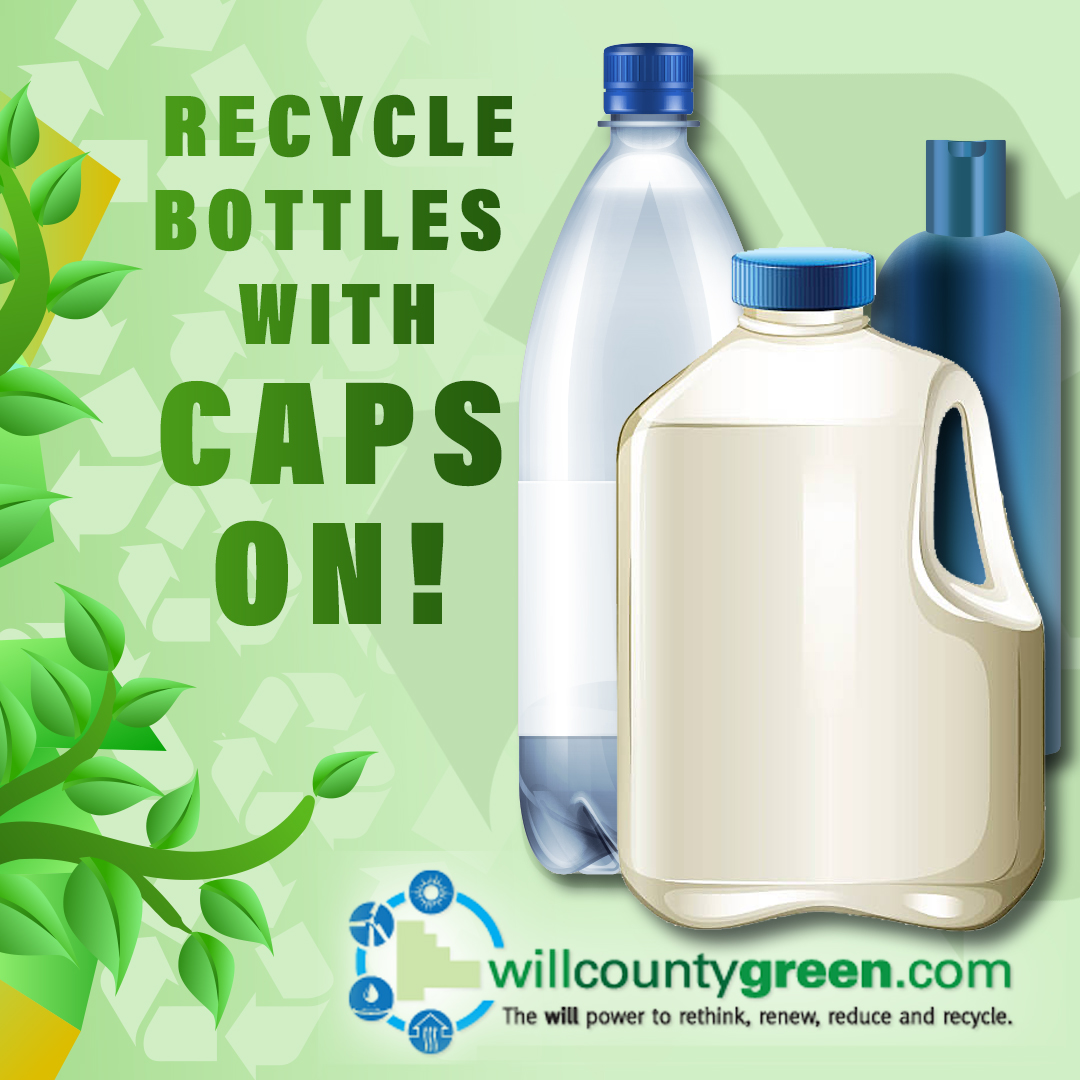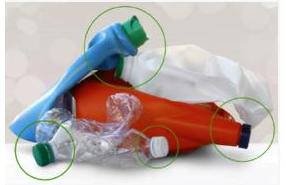|

Plastic Bottles, Tubs, and Jugs Recycling:
- Empty Containers (wipe out tubs - rinsing is NOT required to conserve water)
- If possible, step on the empty container and replace cap
- No loose caps. Items under 2 inches fall through sorting equipment, causing contamination to items being collected below.
- Since 2018, focus has shifted away from the numbers on plastic items.
- The chasing arrow has never meant the item is curbside recyclable.
- The description of "Bottles, Tubs, and Jugs" captures most #1, #2, #5, and #7 recyclable containers
- #6 is not recyclable but is occassionally caught in this description contributing a minor amount of contamination that is often caught by Optical Sorting equipment
Bottles, Tubs, and Jugs are accepted in ALL Illinois Curbside Programs
Common Products Made from Bottles, Tubs, and Jugs
The materials in your cart are commingled and they are placed in a collection truck serving over 1,000 homes. The truck uses some compaction to improve effieciency and, when full, dumps all the items on a concrete floor of a Material Recovery Facility (MRF).
Equipment is used to load the items onto a conveyor system where people and machines remove contaminants and sort them into their individual material streams. For instance: A semi-trailer will be filled with bales of milk jugs and water jugs (natural HDPE) and another semi-trailer will be filled with soda-pop bottles, water bottles and other #1 PET containers, Any containers with caps will take the caps along for the ride, even if they are a different plastic resin.
They travel to a recycling facility where the plastic will be cut, washed and processed into pellets to be made into a new product. It is important to note that plastic food containers are rarely able to be made into food service quality plastic as the heat used in processing is not rated high enough to kill all bacteria. However, they can become non-food products.
• #1 PET Soda Pop Bottles are often turned into Polyester Carpeting
• #2 HDPE Milk Jugs are often made into laundry bottles
• #2 HDPE Laundry and Shampoo bottles are often made in similar products
• #5 PP (Polypropylene) Butter tubs, yogurt containers, and shampoo bottles are often turned into packaging and auto products
• #7 "Other" bottles and tubs are made from a combination of the first six identifed resins or a brand new resin. Various products are made from the types that are recyclable based on individual characteristics.
Clarification: 9% of Plastic is Recycled - FALSE Statement
While there are many concerns about various aspects of plastic recycling, the FACT is that most materials placed in your recycling cart are recycled. Unless contaminated with food, beverages or placed in a plastic bag, all Bottles, Tubs, and Jugs are being sorted and sent to recycling facilities to be turned into new products.
Contamination of recycling is a concern. Since 1990, the residue rate (amount sent to landfill) at Material Recovery Facilities (MRFs) that sort curbside recyclables has been incresing from 3% to 20% or more. This is due to people placing items in plastic bags, and placing plastic that is not taken such as Polystyrene (foam) in the recycling carts.
Finally, several environmental organizations claim that only 9% of all the plastic waste ever produced has been recycled but when you unpack this claim, you realize that plastic has been in use since the 1940s. We wear plastic, we drive in plastic vehicles, we give children plastic toys, we read website information on plastic devices and our health care industry utilizes a variety of sterile disposable plastic to provide safe health care. That is a lot of plastic that cannot be placed in the curbside recycling and much of it is difficult to recycle at speciality facilities.
Whenever possible, use refillable containers to reduce single-use plastic and take speciality items to special recycling collections, such as plastic bags to retail collection sites and electronics to government and retail drop-off sites.
Last updated 9/5/25
©2010 Will County EEC. All Rights Reserved | Web site design and development by Americaneagle.com
|